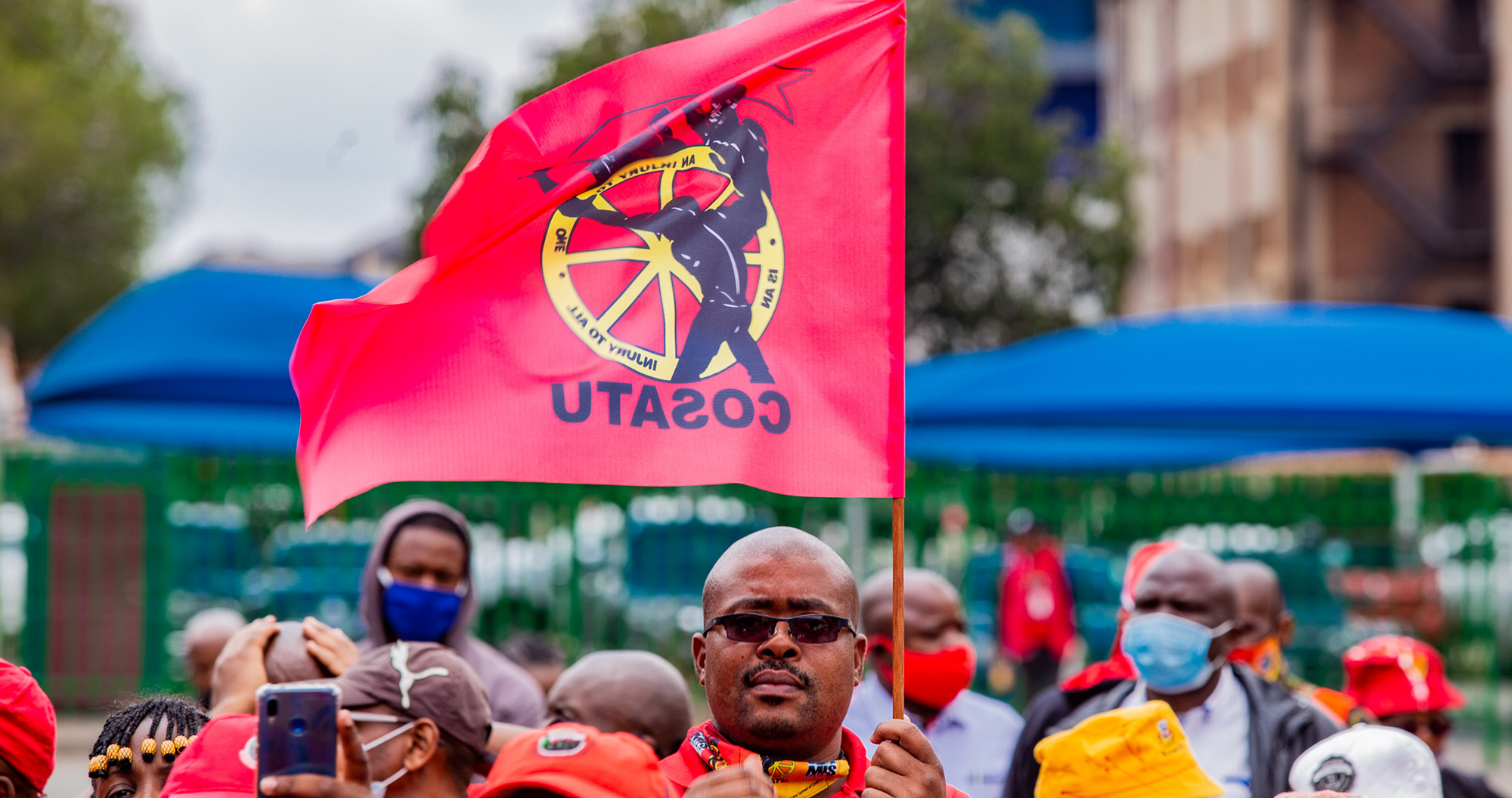Oxymorons are now so much a part of our lives that we barely notice them. Think of “civil war” or “paper towel”, or “crash landing” or “deafening silence”. One you often see in the business press is “negative growth”, which is a polite way of saying that this is a positive shitstorm.
The same applies to phrases, like “fighting for peace”, although the phrase is so self-consciously oxymoronic that we do get the joke. Comedian George Carlin once famously said that “fighting for peace is like making love for virginity”.
To all of these, one must add something very specific to South Africa: “striking for jobs” – and this one is seriously not funny. It’s my unbiased opinion that striking for jobs is true fiction. Whenever the SA labour movement calls on the SA labour force to strike for jobs, I tend to let out a silent scream.
Tomorrow, the trade union movements have called for a day-long “general strike”, although, of course, this too is an oxymoron: it’s neither a strike and nor is it general. Participants are invariably those who have no real choice in the matter, because if transport routes break down, then the work stayaway works.
One of the questions never really answered is, how much this costs society. Some estimates are provided sometimes, but I wonder about their veracity. So I thought, why not try to calculate it myself? How would one do that?
Actually, it’s not very difficult to at least get an “exact estimate”. There are two essential losses applicable here: the wages the workforce lose by not going to work – because now almost all employers impose a "no work, no pay" policy – and the lost corporate profits these stayaways engender.
Let's take two companies you could say are proxies for the SA workforce – one representing higher-paid workers and one representing lower-paid workers: Standard Bank and Shoprite. You will see why in a bit.
Visit Daily Maverick's home page for more news, analysis and investigations
Standard Bank has 54,000 employees and the average salary is about R810,000 a year. The company made about R24-billion in profit last year. So if you work on 260 working days a year, that works out at a profit of R1,700 per employee per day, and an average wage of about R3,000 per employee per day. Shoprite, on the other hand, earned about R10-billion last year and has 145000 employees: its profit per working day was about R265, and employees earned about R1,000 on average per working day.
If you average those out, you get a snapshot of the SA formal sector, in which companies earn about R900 per day per employee on average, and employees earn about R2,000 per day. That looks anomalous since employees are earning more than companies make, but it does make sense because we are talking profit here, not turnover.
My guess is that both figures are a bit high, but let’s stick with them for now. Neither am I taking tax into consideration here, deliberately, because we are talking about losses to the country, not to individuals. We should note, government also loses in a general stay-away.
In any event, if we multiply those average figures by the working population, which is 15.6 million people, a single day off work for everyone costs the country R15.4-billion in lost profits, and R32-billion in lost wages – a total of R47.4-billion. These numbers are, to stay with our oxymoronic theme, pretty ugly.
Of course, it’s not as bad as that. Work can be caught up, although lost wages cannot. But let’s assume that at least a third of the population doesn’t take part in the strike, and that by working a little harder or longer, the dent in profits is smaller than a straight calculation would imply. So chop off two-thirds of that number.
Even doing so, the total cost to the country of a one-day strike is R16-billion by my calculation (and, by all means, let me know if you think it’s wrong). And this doesn’t take into account what happens to business confidence, workplace morale, investment and entrepreneurship, all of which get hit to a certain degree.
And what will the stayaway achieve? Actually, we know very precisely what it will achieve: nothing. We know this because, in a fit of honesty, one of the strike organisers, Saftu general secretary Zwelinzima Vavi, said so very specifically. “It will achieve absolutely nothing,” he said. It’s just the start of the process of mobilising the working class, he said.
I appreciate, of course, that people in SA are gatvol and that unemployment is high (though today’s numbers were a surprise on the upside), and that the cost of living has increased. I know people struggle to feel as though their voices are heard. It’s tough out there. But I have to ask: Is this really the way to fix SA’s many problems?
It’s destructive, pointless by definition, and the goals the movement is pressing for are surefire, absolutely guaranteed, ways of making things worse.
R16-billion seems a lot to pay to achieve nothing, and that’s not oxymoronic – it's just plain moronic. BM/DM





